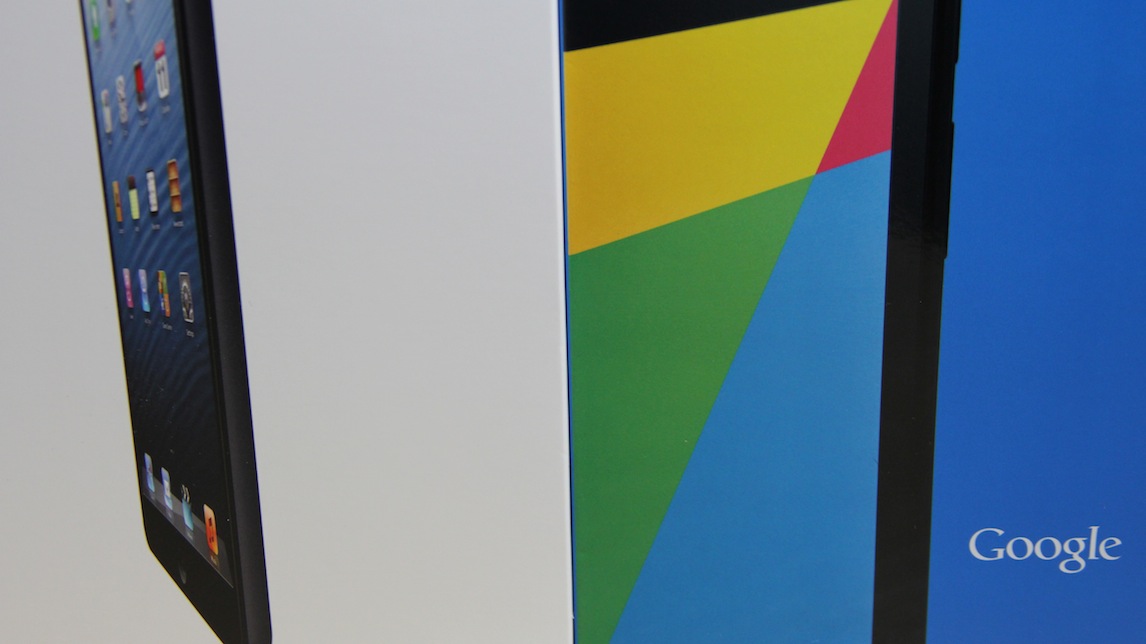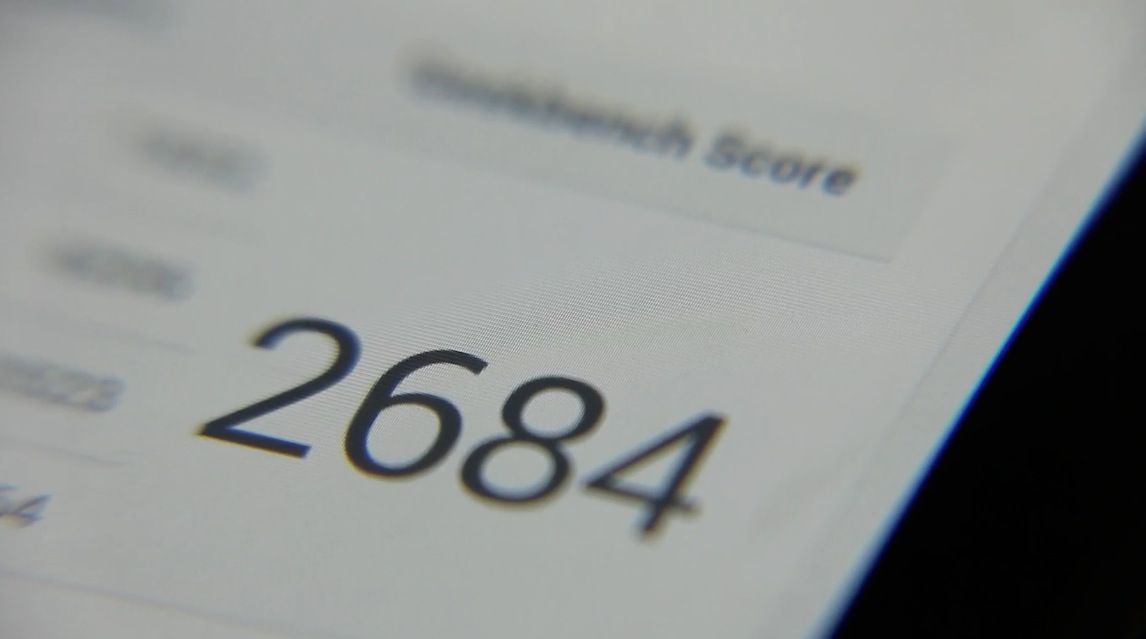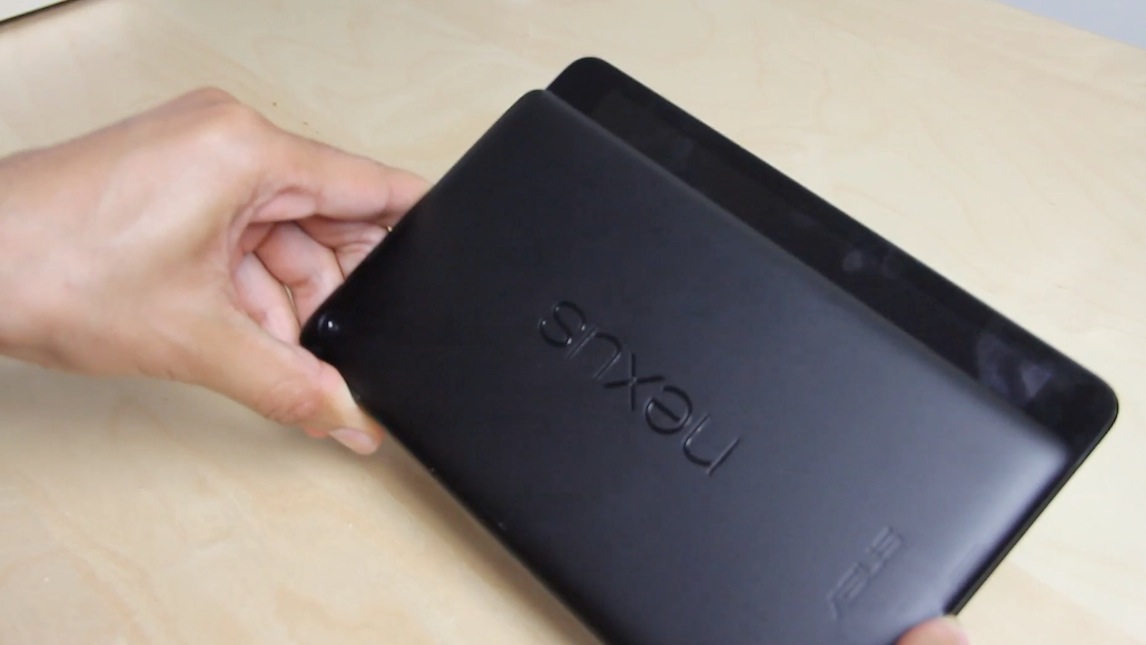The new Nexus 7 has touched down in stores, and it’s a pretty compelling little device at $229 for the base 16GB Wi-Fi unit. It’s much improved over its predecessor in nearly every facet, and will likely become a thorn in Apple’s side as time goes on without a significant iPad mini (Retina) refresh.
With that all said, the iPad mini still has a few distinct advantages over Google’s latest offering. Its main advantage is readily apparent, as its screen size completely dwarfs the smaller screen of the Nexus 7. Interestingly enough, the bezel on the older iPad mini is still smaller on all four sides when compared to the Nexus 7. Lastly, the iPad mini is still thinner than the Nexus 7. By themselves, all of these advantages may not amount to much in the eyes of consumers, but when compared side by side, they all add up for a pretty intense debate regarding which is superior.
Make no mistake though, in terms of sheer power and screen prowess, this is no competition. After comparing the two, running benchmarks, playing games, etc, it’s evident that Apple has a legitimate competitor on its hands when it comes to the low end of the tablet market. Check inside as I compare both the new Nexus 7 and the iPad mini in our hands-on video walkthrough.
Video comparison
During my review of the original Nexus 7, I sang the devices praises on many fronts. It was a solid tablet, though a bit underpowered, a bit too thick and heavy, and featured a somewhat underwhelming screen. This new Nexus has fixed the majority of those issues and then some. I’ll be back with a full review of the new Nexus 7 from the perspective of a daily iPad mini user, so stay tuned for that. For now, I’d like to talk about some of the key differences between the two powerhouse mini tablets.
Size
The Nexus 7 is super small when considering its width at only 4.5 inches wide. That’s smaller than the outgoing Nexus 7 (4.7 inches) and much smaller than the comparatively behemoth iPad mini (5.3 inches). This makes the Nexus 7 extremely easy to hold confidently with just one hand, but you do sacrifice a lot of screen space for that privilege. The fact that the bezels are still thicker than the iPad mini on all sides doesn’t help the cause.
With all of that said, the Nexus 7 is the far superior device when it comes to screen resolution. It’s a true Retina display with a pixel density of 323 pixels per inch. That’s 107 more ppi than the outgoing Nexus 7, and a whopping 160 ppi more than the iPad mini. The screen of the Nexus 7 is perhaps its most crowning achievement, yet there’s more…
Speed
This is where it starts to get a little depressing for iPad mini owners. Granted, Google has had two generations to work on this, but wow — the differences between the two from a benchmarking perspective is crazy. There’s simply no two ways around the reality; the Nexus 7 runs circles — multiple circles — around the iPad mini. Clocking in at a Geekbench score of 2,684, that’s three and a half times faster than the iPad mini’s 766!
Obviously benchmark scores don’t tell the whole story from a performance perspective, but after testing out a few games between the two, I think they paint a pretty accurate representation of what end users can expect from real world performance.
Price
The hardware encasing the innards of the Nexus 7 still pales in comparison to the Lexus like styling of the iPad mini. The iPad, and iOS devices in general, have set the bar so high here that it’s rare when any other device manufacturer can be mentioned in the same breath with regard to aesthetics. The Nexus 7 doesn’t do much to change this trend. It’s still comprised entirely of plastic, although it does feel better built than the device it replaces.
I didn’t bring up the point of build quality to bash the Nexus, but it’s evident that you do get what you pay for from a design and hardware perspective. Apple spends years and millions on research and development. It’s insanely anal about every minute detail, and would rather opt for better design than cost cutting strategies. Google is the opposite in this matter. They’ve undoubtedly cut all sorts of corners to bring such a device to market that’s sub $250. At $229 for the 16GB Wi-Fi version, this device is near impulse buy status. Unless Apple changes its culture and mindset on design, I don’t see them ever being able to compete on the price front. For that reason alone, the Nexus 7 has, and will continue to garner lots of adopters. And hey, the Nexus 7 isn’t exactly last week’s trash, this is a very solid, and arguably cutting edge portable tablet in some aspects.
Final thoughts
I’m really interested to see what Apple decides to do next. Can they even afford to release a new iPad mini that isn’t donning a new Retina quality display? How long will it take for them to bring the refresh to market? These are all questions that Apple management will have to answer sooner than later. These are very difficult questions, and I’m not envious of Apple’s leadership team in the slightest.
The only reason I wouldn’t consider using the Nexus 7 is because of the app eco-system and the operating system. I still think iOS is ahead of Android in more areas than Android is ahead of iOS. For me, Android still feels like a beta product in many regards; it feels sort of thrown together. Yet, Google continues to iterate, and iterate some more. Eventually, Google will get to the point where they get it all right, even down to the smallest details, and at its going rate, the only variable here is time.
The bottom line is that Google has officially laid down the gauntlet. Its made attempts before, but this is perhaps the first product from Google that I’ve used and have become a little jealous as a result. I know some people aren’t going to appreciate this statement, but the iPad mini just looks dated when compared to the Nexus 7, and who knows if we’ll get something from Apple that’s on the same wave length anytime soon.
What do you think? Will the Nexus 7 be the first device to successfully challenge iPad’s dominance?


